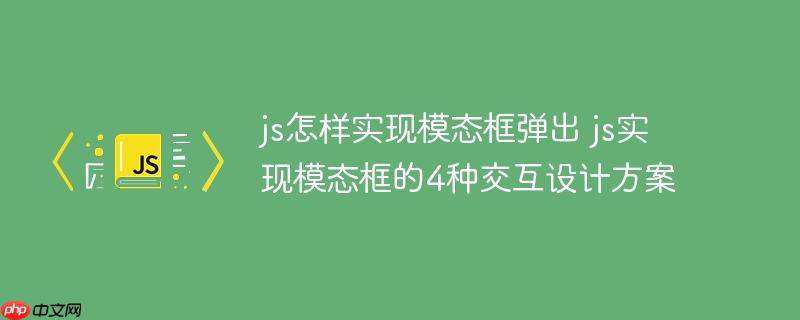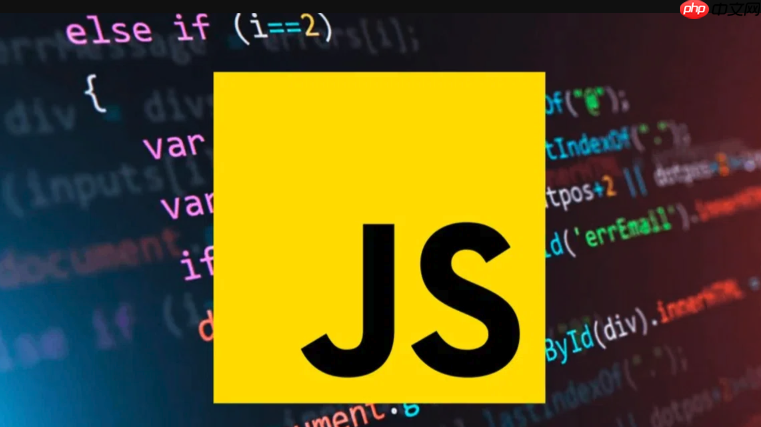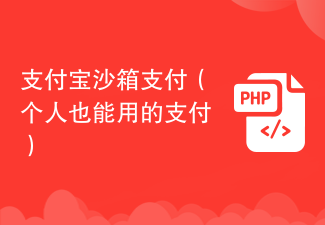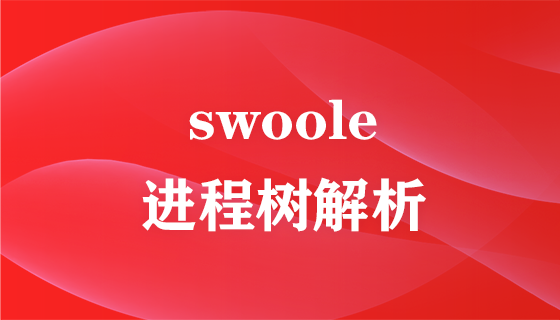实现模态框的核心在于控制html元素的显示隐藏及交互逻辑,1. html结构需包含遮罩层与内容区域;2. css设置初始隐藏及弹出样式;3. javascript控制显示、隐藏及交互事件。四种实现方案分别为:基础模态框通过display属性切换显隐;动画模态框使用transition与类控制动画;事件委托优化多按钮场景;promise模态框返回异步结果。兼容性方面需注意旧浏览器对classlist、position: fixed及css动画的支持问题。可借助jquery ui、bootstrap等库简化实现,亦可通过ajax加载远程内容。无障碍设计应使用aria属性、键盘导航、焦点管理以适配屏幕阅读器。

实现模态框,本质上就是控制HTML元素的显示与隐藏,并处理一些额外的交互逻辑,让它看起来更像一个“模态”的窗口。

解决方案

实现模态框的核心在于:

下面是4种交互设计方案的JS实现思路:
方案一:基础模态框
<div id="myModal" class="modal">
<div class="modal-content">
<span class="close">×</span>
<p>Some text in the Modal!</p>
</div>
</div>
<button id="myBtn">Open Modal</button>
<style>
/* 初始隐藏 */
.modal {
display: none;
position: fixed; /* Stay in place */
z-index: 1; /* Sit on top */
left: 0;
top: 0;
width: 100%; /* Full width */
height: 100%; /* Full height */
overflow: auto; /* Enable scroll if needed */
background-color: rgb(0,0,0); /* Fallback color */
background-color: rgba(0,0,0,0.4); /* Black w/ opacity */
}
.modal-content {
background-color: #fefefe;
margin: 15% auto; /* 15% from the top and centered */
padding: 20px;
border: 1px solid #888;
width: 80%; /* Could be more or less, depending on screen size */
}
.close {
color: #aaa;
float: right;
font-size: 28px;
font-weight: bold;
}
.close:hover,
.close:focus {
color: black;
text-decoration: none;
cursor: pointer;
}
</style>
<script>
// 获取元素
var modal = document.getElementById("myModal");
var btn = document.getElementById("myBtn");
var span = document.getElementsByClassName("close")[0];
// 点击按钮,打开模态框
btn.onclick = function() {
modal.style.display = "block";
}
// 点击 <span> (x), 关闭模态框
span.onclick = function() {
modal.style.display = "none";
}
// 点击模态框外部, 关闭模态框
window.onclick = function(event) {
if (event.target == modal) {
modal.style.display = "none";
}
}
</script>JS:获取按钮、模态框和关闭按钮的元素。 通过 onclick 事件监听器控制模态框的显示和隐藏。点击遮罩层也会关闭模态框。
方案二:动画效果的模态框
在方案一的基础上,增加CSS动画,让模态框的弹出和关闭更平滑。
.modal {
/* ... 其他样式 */
opacity: 0;
transition: opacity 0.3s ease;
}
.modal.show {
display: block;
opacity: 1;
}JS:
btn.onclick = function() {
modal.classList.add("show");
}
span.onclick = function() {
modal.classList.remove("show");
}
window.onclick = function(event) {
if (event.target == modal) {
modal.classList.remove("show");
}
}关键点:使用classList.add和classList.remove来添加和移除CSS类,触发CSS动画。
方案三:使用事件委托
如果页面上有多个按钮需要打开模态框,可以使用事件委托来简化代码。
<div data-modal-target="#myModal1">Open Modal 1</div>
<div data-modal-target="#myModal2">Open Modal 2</div>
<div id="myModal1" class="modal">...</div>
<div id="myModal2" class="modal">...</div>
<script>
document.addEventListener('click', function(event) {
if (event.target.hasAttribute('data-modal-target')) {
const modalId = event.target.getAttribute('data-modal-target');
const modal = document.querySelector(modalId);
modal.classList.add('show');
event.preventDefault(); // 阻止默认行为,比如链接跳转
}
if (event.target.classList.contains('close') || event.target.classList.contains('modal')) {
const modal = event.target.closest('.modal'); // 找到最近的.modal父元素
if(modal) {
modal.classList.remove('show');
}
}
});
</script>JS:监听整个文档的点击事件。如果点击的元素有data-modal-target属性,则打开对应的模态框。 事件委托减少了事件监听器的数量,提高了性能。
方案四:使用Promise的模态框
让模态框可以返回一个Promise,用于处理模态框关闭后的逻辑。
function showModal(content) {
return new Promise((resolve, reject) => {
// 创建模态框元素
const modal = document.createElement('div');
modal.classList.add('modal');
modal.innerHTML = `
<div class="modal-content">
<span class="close">×</span>
<p>${content}</p>
<button class="confirm">Confirm</button>
<button class="cancel">Cancel</button>
</div>
`;
document.body.appendChild(modal);
modal.classList.add('show');
// 获取按钮
const confirmButton = modal.querySelector('.confirm');
const cancelButton = modal.querySelector('.cancel');
const closeButton = modal.querySelector('.close');
// 监听按钮点击事件
confirmButton.addEventListener('click', () => {
modal.classList.remove('show');
setTimeout(() => modal.remove(), 300); // 等待动画结束后移除
resolve(true);
});
cancelButton.addEventListener('click', () => {
modal.classList.remove('show');
setTimeout(() => modal.remove(), 300);
resolve(false);
});
closeButton.addEventListener('click', () => {
modal.classList.remove('show');
setTimeout(() => modal.remove(), 300);
reject(new Error('Modal closed without confirmation'));
});
modal.addEventListener('click', (e) => {
if(e.target === modal) {
modal.classList.remove('show');
setTimeout(() => modal.remove(), 300);
reject(new Error('Modal closed by clicking outside'));
}
});
});
}
// 使用示例
document.getElementById('myBtn').addEventListener('click', () => {
showModal('Are you sure you want to continue?')
.then(result => {
if (result) {
console.log('User confirmed');
} else {
console.log('User cancelled');
}
})
.catch(error => {
console.error('Modal error:', error.message);
});
});JS:showModal函数返回一个Promise。 点击“Confirm”按钮resolve Promise,点击“Cancel”按钮reject Promise。 使用then和catch处理模态框关闭后的逻辑。
模态框的兼容性问题主要集中在CSS和JavaScript上。例如,某些旧版本的浏览器可能不支持classList API,需要使用className来替代。 CSS动画的兼容性也需要考虑,可以使用CSS前缀来解决。 另外,IE浏览器对position: fixed的支持可能存在问题,需要使用JavaScript来模拟。
可以使用jQuery UI、Bootstrap、Materialize等JavaScript库来简化模态框的实现。 这些库提供了现成的模态框组件,可以快速集成到项目中。 例如,使用Bootstrap的模态框:
<!-- HTML -->
<button type="button" class="btn btn-primary" data-toggle="modal" data-target="#myModal">
Open modal
</button>
<div class="modal fade" id="myModal" tabindex="-1" role="dialog" aria-labelledby="myModalLabel">
<div class="modal-dialog" role="document">
<div class="modal-content">
<div class="modal-header">
<button type="button" class="close" data-dismiss="modal" aria-label="Close"><span aria-hidden="true">×</span></button>
<h4 class="modal-title" id="myModalLabel">Modal title</h4>
</div>
<div class="modal-body">
...
</div>
<div class="modal-footer">
<button type="button" class="btn btn-default" data-dismiss="modal">Close</button>
<button type="button" class="btn btn-primary">Save changes</button>
</div>
</div>
</div>
</div>
<!-- JavaScript (需要引入jQuery和Bootstrap JS) -->
<script>
$('#myModal').modal(); // 初始化模态框
</script>只需要引入jQuery和Bootstrap的CSS和JS文件,然后使用$('#myModal').modal()即可初始化模态框。
可以使用AJAX技术在模态框中加载远程内容。 例如,当点击打开模态框的按钮时,使用fetch API或XMLHttpRequest对象从服务器获取数据,然后将数据插入到模态框的内容区域。
document.getElementById('myBtn').addEventListener('click', () => {
fetch('https://example.com/api/data')
.then(response => response.text())
.then(data => {
document.querySelector('#myModal .modal-body').innerHTML = data;
$('#myModal').modal('show'); // 使用Bootstrap打开模态框
})
.catch(error => {
console.error('Error fetching data:', error);
});
});JS:使用fetch API从https://example.com/api/data获取数据。 将获取到的数据插入到#myModal .modal-body元素中。 使用$('#myModal').modal('show')打开模态框。
模态框的无障碍性非常重要,需要考虑以下几点:
aria-属性: 使用aria-labelledby和aria-describedby属性来关联模态框的标题和描述。 使用aria-hidden="true"属性来隐藏模态框。tabindex属性来控制元素的焦点顺序。<div class="modal fade" id="myModal" tabindex="-1" role="dialog" aria-labelledby="myModalLabel" aria-hidden="true">
<div class="modal-dialog" role="document">
<div class="modal-content">
<div class="modal-header">
<h5 class="modal-title" id="myModalLabel">Modal title</h5>
<button type="button" class="close" data-dismiss="modal" aria-label="Close">
<span aria-hidden="true">×</span>
</button>
</div>
<div class="modal-body">
...
</div>
<div class="modal-footer">
<button type="button" class="btn btn-secondary" data-dismiss="modal">Close</button>
<button type="button" class="btn btn-primary">Save changes</button>
</div>
</div>
</div>
</div>HTML:使用aria-labelledby关联标题,aria-hidden="true"初始隐藏。 需要额外的JS代码来管理焦点。
以上就是js怎样实现模态框弹出 js实现模态框的4种交互设计方案的详细内容,更多请关注php中文网其它相关文章!

每个人都需要一台速度更快、更稳定的 PC。随着时间的推移,垃圾文件、旧注册表数据和不必要的后台进程会占用资源并降低性能。幸运的是,许多工具可以让 Windows 保持平稳运行。




Copyright 2014-2025 https://www.php.cn/ All Rights Reserved | php.cn | 湘ICP备2023035733号